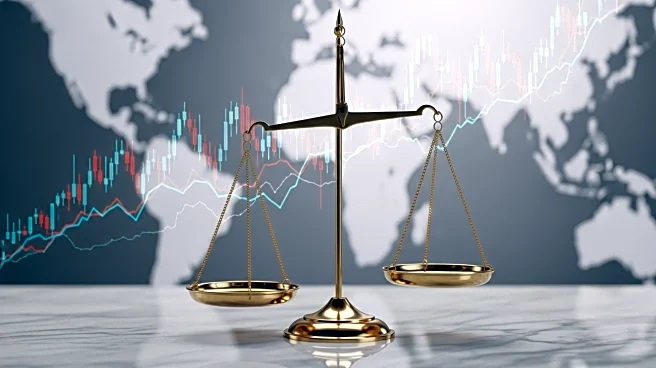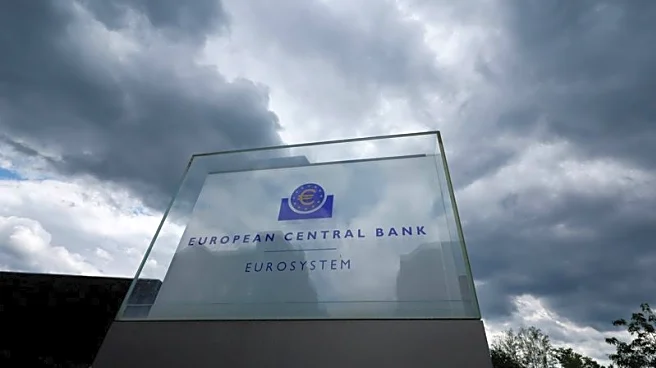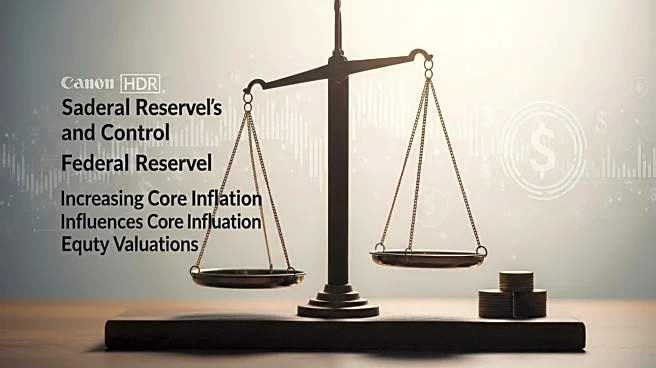What is the story about?
What's Happening?
The Federal Reserve is contemplating a potential rate cut at its upcoming September meeting, as conflicting signals emerge from the U.S. job market. Recent data indicates job growth has slowed significantly, averaging just 35,000 over the past three months, which is one of the weakest patches since the financial crisis. Despite this, the unemployment rate remains steady at 4.2%, and wage growth is sufficient to keep pace with inflation. Fed Chair Jerome Powell has acknowledged increased risks in the job market, suggesting that policy adjustments may be necessary. The decision will hinge on upcoming inflation data and job reports, which could provide clarity on whether the labor market is stabilizing or facing further challenges.
Why It's Important?
The Federal Reserve's decision on interest rates is crucial for the U.S. economy, impacting borrowing costs for consumers and businesses. A rate cut could stimulate economic activity by making loans cheaper, potentially boosting consumer spending and business investment. However, it also carries the risk of exacerbating inflation if not managed carefully. The Fed's actions are closely watched by markets and policymakers, especially given President Trump's pressure for lower rates. The outcome of the September meeting could signal the Fed's stance on balancing inflation concerns with the need to support the labor market, influencing economic policy and market expectations.
What's Next?
The Federal Reserve will receive final inflation data on September 11, which will be crucial for its decision-making process. The September meeting, scheduled for the 16th and 17th, will likely involve intense debate among policymakers, as they weigh the risks of inflation against the need to support the job market. The Fed's decision could set a precedent for future monetary policy, particularly in the context of ongoing economic uncertainties and political pressures. Stakeholders, including businesses and investors, will be closely monitoring the Fed's actions and statements for indications of its future policy direction.
Beyond the Headlines
The Fed's decision-making process highlights the complexities of managing economic policy in a rapidly changing environment. The divergence in job market signals underscores the challenges of interpreting economic data and making informed policy decisions. The Fed's commitment to transparency and independence is crucial in maintaining market confidence, especially amid political pressures. The broader implications of the Fed's actions could extend beyond immediate economic impacts, influencing long-term trends in employment, inflation, and economic growth.
AI Generated Content
Do you find this article useful?















